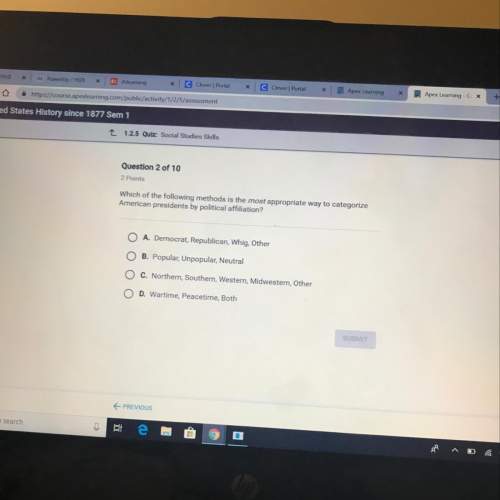
History, 09.06.2021 05:10 FloweyFlower
Prince Siddhartha’s experiences with suffering transformed [transformed: to change in appearance or character] him. Suddenly, his royal life seemed empty. He wanted to find the happiness and peace that the ascetic had found.
Siddhartha decided to give up his old life and search for enlightenment [enlightenment: the state of gaining spiritual insight and finding universal truth; the goal of Buddhists] . Becoming enlightened would mean finding deep truth and freedom from suffering.
One night, the prince asked his driver to take him to the forest. At the edge of the dark woods, Siddhartha removed his royal robes, sandals, and jewels. He cut off his hair with a knife. He put on a simple robe and carried only a small bowl for alms [alms: goods or money given to the poor] ,or gifts of food. Wishing his driver farewell, Siddhartha began his life as an ascetic.
Siddhartha met other ascetics as he wandered the forests and fields. Like him, they wanted to understand the nature of the world. They believed that they could reach enlightenment through meditation. While meditating, the ascetics sat quietly and focused their minds on spiritual questions. Siddhartha quickly became an expert at meditation.
The ascetics also denied [denied: to hold back and refuse something] themselves many basic needs. For example, they stayed up all night without sleeping. They sat in the hot sun without shelter. They held their breath for several minutes. They also fasted, or stopped eating, for many days at a time. They hoped to find spiritual truth through self-denial.
Siddhartha continued to follow the way of the ascetics for some time. He became terribly thin from lack of food. According to Buddhist tradition, he became so thin that he could touch his stomach and feel his backbone. Eventually, he became unhappy with this extreme way of living. And he had not yet found the key to enlightenment.
Prince Siddhartha’s experiences with suffering transformed [transformed: to change in appearance or character] him. Suddenly, his royal life seemed empty. He wanted to find the happiness and peace that the ascetic had found.
Siddhartha decided to give up his old life and search for enlightenment [enlightenment: the state of gaining spiritual insight and finding universal truth; the goal of Buddhists] . Becoming enlightened would mean finding deep truth and freedom from suffering.
One night, the prince asked his driver to take him to the forest. At the edge of the dark woods, Siddhartha removed his royal robes, sandals, and jewels. He cut off his hair with a knife. He put on a simple robe and carried only a small bowl for alms [alms: goods or money given to the poor] ,or gifts of food. Wishing his driver farewell, Siddhartha began his life as an ascetic.
Siddhartha met other ascetics as he wandered the forests and fields. Like him, they wanted to understand the nature of the world. They believed that they could reach enlightenment through meditation. While meditating, the ascetics sat quietly and focused their minds on spiritual questions. Siddhartha quickly became an expert at meditation.
The ascetics also denied [denied: to hold back and refuse something] themselves many basic needs. For example, they stayed up all night without sleeping. They sat in the hot sun without shelter. They held their breath for several minutes. They also fasted, or stopped eating, for many days at a time. They hoped to find spiritual truth through self-denial.
Siddhartha continued to follow the way of the ascetics for some time. He became terribly thin from lack of food. According to Buddhist tradition, he became so thin that he could touch his stomach and feel his backbone. Eventually, he became unhappy with this extreme way of living. And he had not yet found the key to enlightenment.
Respond to the question based on the reading:
1) What did this part of the story reveal about the life of Siddhartha?

Answers: 1
Another question on History

History, 21.06.2019 15:00
What happened to segregation laws after the case of plessy v. ferguson? segregation still existed, but only in very small towns with no access to court systems. important politicians like ferguson, once in favor of segregation, began to denounce it. plessy v. ferguson began the breakdown of segregation as it was defined at that time. segregation continued, and citizens experienced many more years of legal segregation.
Answers: 2

History, 22.06.2019 05:30
Which aspect of the postwar era did jazz’s liveliness, looseness, and improvisation most reflect?
Answers: 1

History, 22.06.2019 07:00
Which is a result of the free exercise clause? parents can prevent their children from being vaccinated. people with a religious objection to military service cannot be drafted. businesses that sell religious materials can be open only on sundays. amish children do not have to attend school past the eighth grade.
Answers: 1

History, 22.06.2019 07:30
In the united state, a system for interaction between unmarried men and woman that casual dating with the purpose of marriage was called
Answers: 1
You know the right answer?
Prince Siddhartha’s experiences with suffering transformed [transformed: to change in appearance or...
Questions




SAT, 28.12.2021 05:30

SAT, 28.12.2021 05:30





English, 28.12.2021 05:40




SAT, 28.12.2021 05:40


SAT, 28.12.2021 05:40



Social Studies, 28.12.2021 05:40




